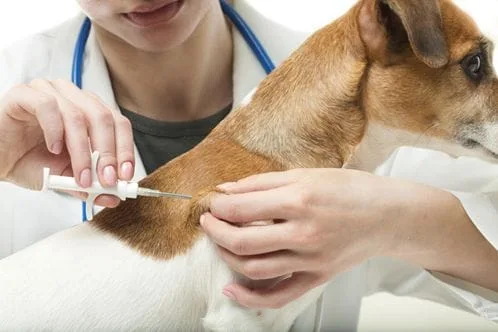bIt only takes a moment for your pet to bolt out the door or break away from his leash. Many pets become lost and never find their way home because they have no form of identification when they get away. Tags on collars are great, but pets often break or lose their collars in their attempt at freedom. Microchipping is a way to ensure your pet can find his way home, with permanent identification that is always in place. Here is a more information on how you can use a microchip to keep your pet safe.
What Is a Microchip?
A microchip is a small electronic computer chip, that is approximately the size of a grain of rice. Each microchip contains a code that is unique to every single chip. This is to ensure that there are no two numbers alike, and so each pet gets their own unique number. Each chip, when scanned, is readable by universal scanners. The chip itself doesn't require any battery, but it is activated when the universal scanner reads over the area.
Is Microchipping Safe?
Microchips do not need a power source and contain no moving parts, so they are safe to stay in your pet for a lifetime. They are made from material that is compatible with an animal’s body, so any discomfort or rejection is very rare. Over time, the microchip will become encased in the tissue, which means it will not move around the body.
What to Expect at a Microchipping Appointment
If you wish to have your pet microchipped, simply ask about it at your next appointment. The procedure is simple. The microchip is inserted using a sterile needle that is holding the chip. It is injected under the skin, between the shoulder blades. It is no more painful than any injection that your pet may receive. It doesn't require any anesthesia or surgery to be inserted. It can also be placed the day your pet comes in for an examination.
The day your pet is microchipped, you will have the ability to register your pet's code online. You will receive paperwork that tells you how to register the microchip. Registering is very important, because that is how your information gets linked to the unique code of the microchip. If you don’t register the microchip, it is worthless. Also, you will need to keep this information, so you can change your contact information if you move, or get a new phone number. Up-to-date information is critical to making sure you protect your pet with your microchip.
What Happens if Your Pet Gets Lost?
If your pet is lost, the people who find him can take him to a local vet, SPCA, or shelter to be scanned. If your microchip information is up-to-date the scanner will find your contact information. Then the vet, SPCA, or shelter staff can give you a call. You will then be able to retrieve your pet and return him home easily.
Microchipping your pet is a simple solution to add a layer of protection in case your pet is lost. Schedule your appointment today with Seneca Animal Hospital to have your pet microchipped. Be sure to give yourself the peace of mind that comes from knowing you will always have a way to be reunited.

